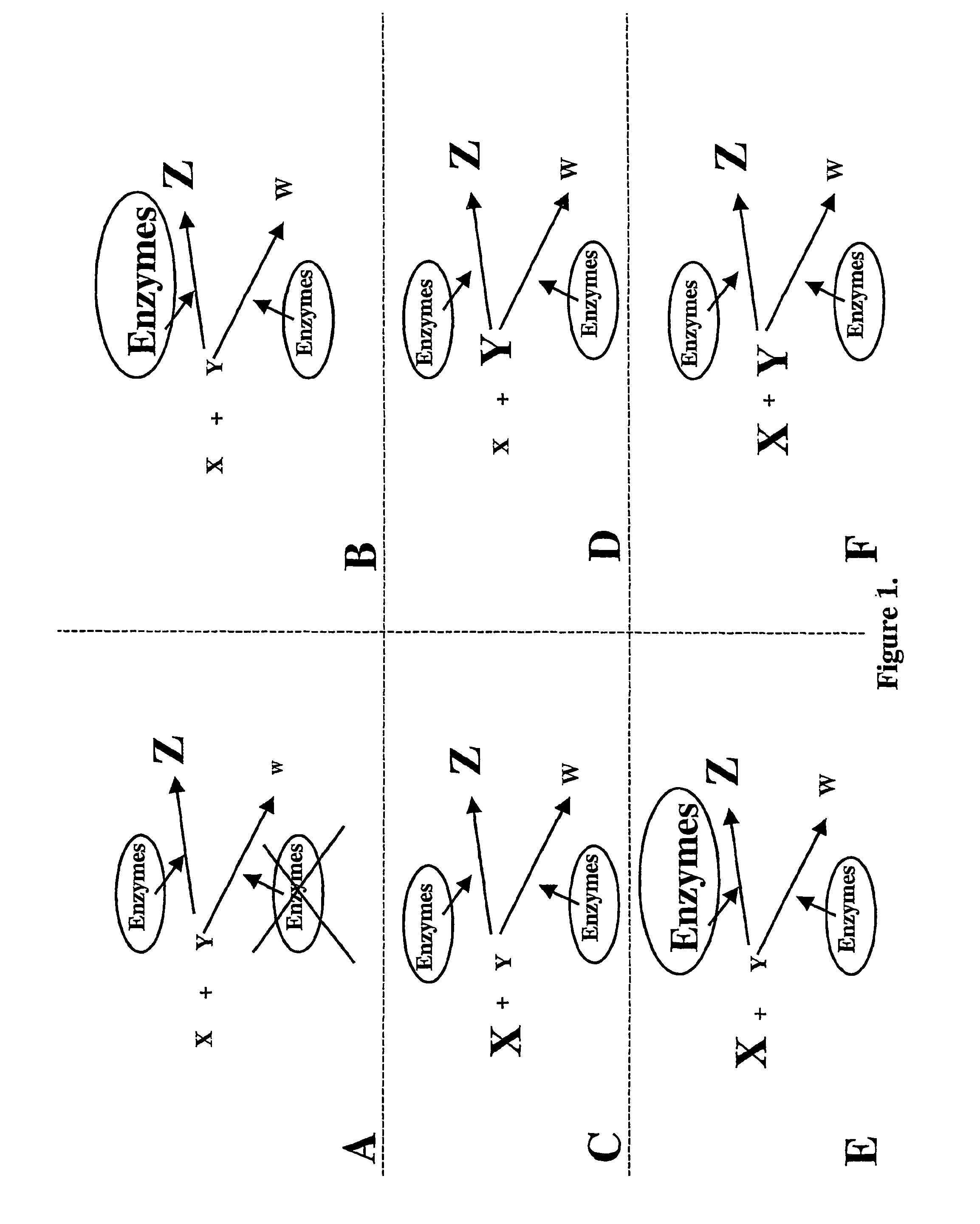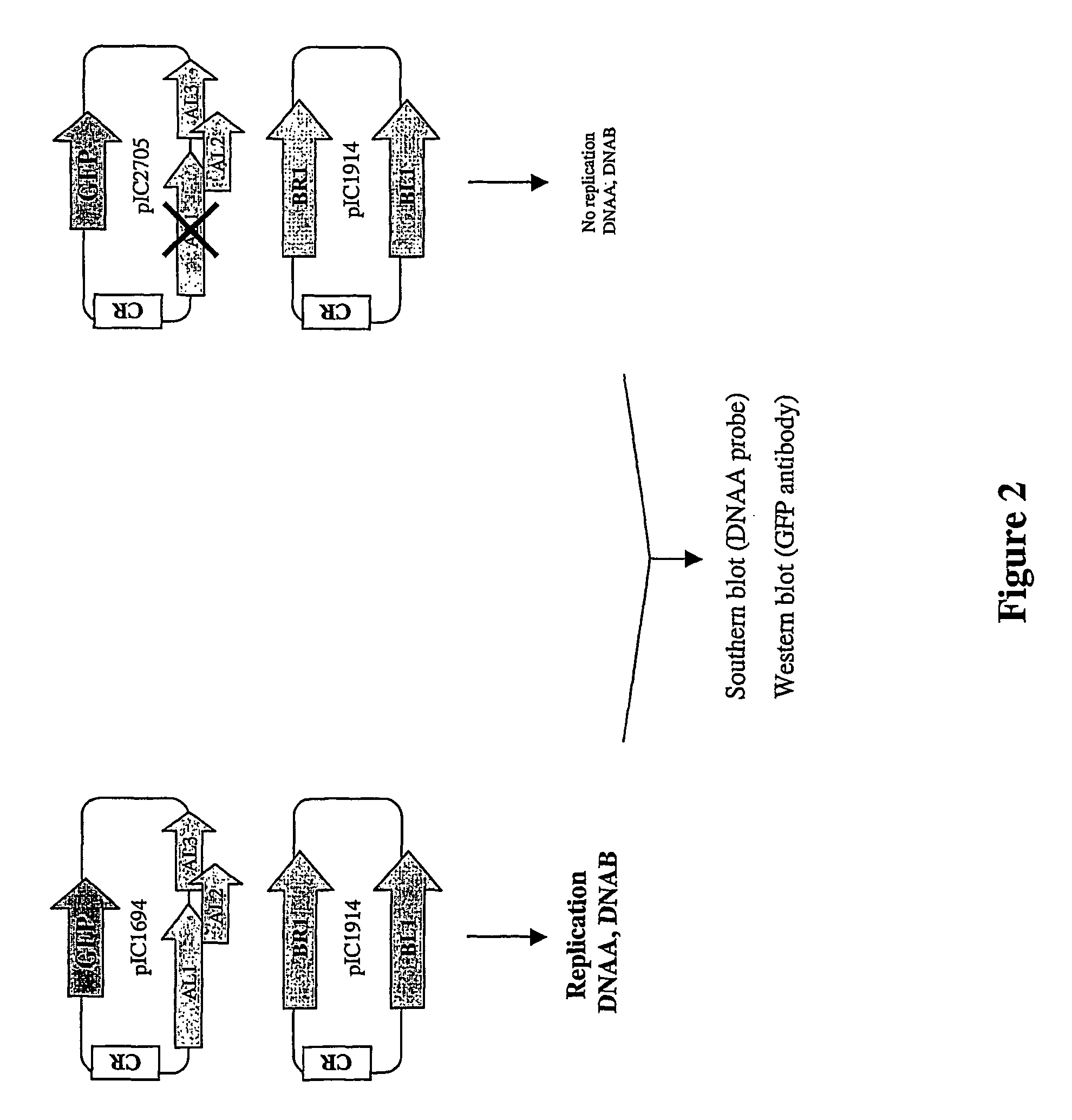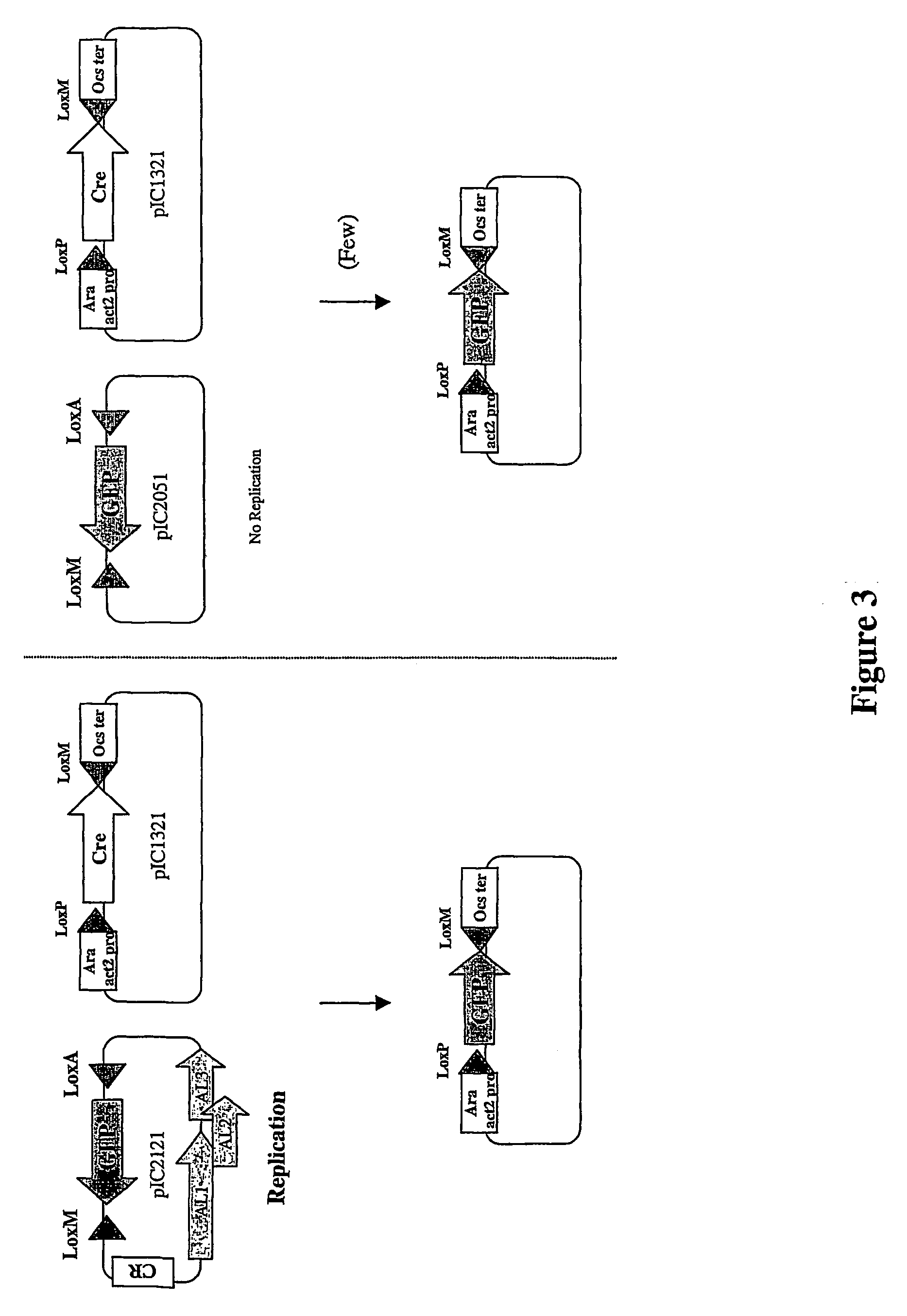Site-targeted transformation using amplification vectors
- Summary
- Abstract
- Description
- Claims
- Application Information
AI Technical Summary
Benefits of technology
Problems solved by technology
Method used
Image
Examples
example 1
This example reports the cloning of replicating clones of BGMV DNAA and DNAB genomes (FIG. 2).
Cloning of a DNAA Genome Replicating Vector Containing GFP:
pUC19 DNA was amplified with primers dnaapr7 (aac tgc agt cta gac tgg ccg tcg ttt tac aac) and dnaapr8 (aac tgc aga aca att gct cga ggc gta atc atg gtc a), and the amplified fragment digested with Pst1 and religated. The resulting plasmid, pIC1144, is similar to pUC19, but the polylinker has been replaced with Xho1, MfeI, and Pst1. DNA was extracted from Phaseolus vulgaris tissue infected by bean golden mosaic virus (BGMV) isolate DSMZ PV-0094 obtained from the German Collection of Microorganisms and Cell Cultures (DSMZ, Deutsche Sammlung von Mikroorganismen und Zelikulturen GmbH). A fragment of the genome encompassing the BGMV common region. (CR; contains the BGMV origin of replication) was amplified by PCR with primers dnaapr3 (ggg aat tca cta gta aag atc tgc cgt cga ctt gga att g) and dnaapr4 (caa tgc atc atg gcg cat cac gct tag ...
example 2
This example shows that replication of a plasmid can increase the frequency of recombination with a target co-transformed non-replicating plasmid. In this example, recombination is mediated by Cre recombinase and takes place at the loxP and LoxM sites present on both the donor and recipient plasmid (FIG. 3).
Description of the Plasmids:
A PCR fragment was amplified from pIC1667 with dnaapr13 (cgc tcg agg ccg tcg act tgg aat tgt c) and dnaapr15 (ccc atg cat cta gag tta acg gcc ggc cca aat atc taa cgt tct cac atg) and cloned as an XhoI-NsiI fragment in pIC1667 digested with XhoI and PstI. The resulting plasmid, pIC1951, is similar to pIC1667 but lacks the coat protein gene promoter.
Plasmid pIC551 was obtained by (i) performing PCR on pUC119 digested with XbaI and Hind3 with primers adlox1 (gtt cta gat gtt aac ggc gcg ccg gcg taa tca tgg tca), adlox2 (aac cat gga gaa ttc ggc cgg ccc tgg cog tcg ttt tac aac), adlox3 (cgg gat cct gag ctc tat aac ttc gta taa tgt atg cta tac gaa gtt gtt cta ...
example 3
In this example, we show that replication of a plasmid containing an insert to be targeted can increase the frequency of recombination with a target site stably inserted on a plant chromosome. Recombination is mediated by Cre recombinase and takes place at the loxP and LoxM sites present on both the replicating plasmid and the target site, and Cre is delivered on a co-transformed plasmid (FIG. 4).
Description of Plasmids:
An adaptor (made with primers adlox15 [tcg aga taa ctt cgt ata gca tac att ata cga agt tat agc t] and adlox16 [ata act tcg tat aat gta tgc tat acg aag tta tc]) containing a LoxP site flanked with XhoI and SacI was cloned in pIC01 digested with XhoI and SacI. The resulting plasmid, pIC2745 contains the DNA fragment (35S promoter-LoxP-Gus-Ocs terminator) in pUC118. An adaptor (made with primers adlox17 [gat cat aac ttc gta taa tct ata cta tac gaa gtt att] and adlox18 [cta gaa taa ctt cgt ata gta tag att ata cga agt tat]) containing a LoxM site (in opposite orientation)...
PUM
| Property | Measurement | Unit |
|---|---|---|
| Biological properties | aaaaa | aaaaa |
Abstract
Description
Claims
Application Information
 Login to View More
Login to View More - R&D
- Intellectual Property
- Life Sciences
- Materials
- Tech Scout
- Unparalleled Data Quality
- Higher Quality Content
- 60% Fewer Hallucinations
Browse by: Latest US Patents, China's latest patents, Technical Efficacy Thesaurus, Application Domain, Technology Topic, Popular Technical Reports.
© 2025 PatSnap. All rights reserved.Legal|Privacy policy|Modern Slavery Act Transparency Statement|Sitemap|About US| Contact US: help@patsnap.com



